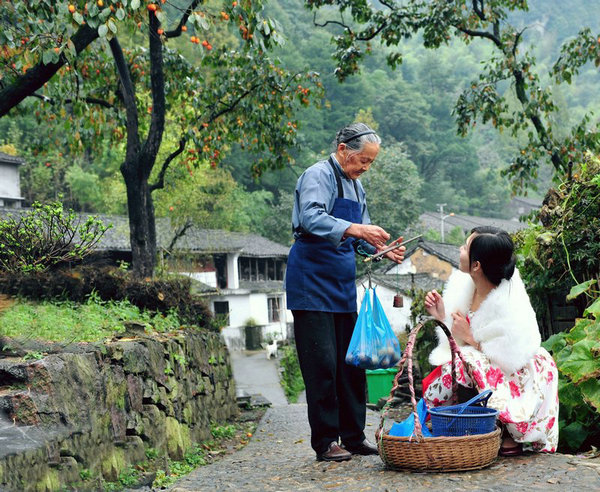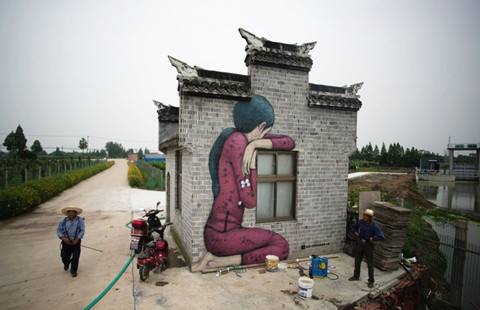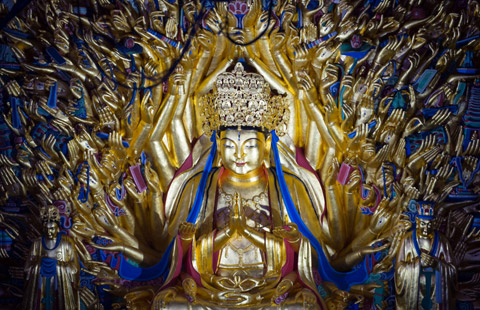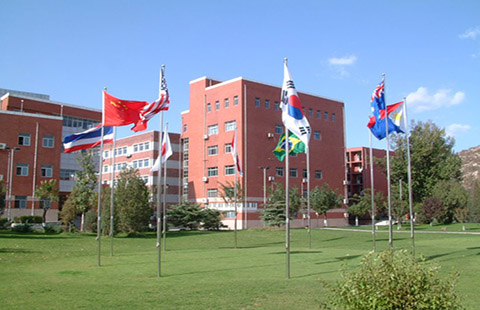Unspoiled ancient villages
Updated: 2015-06-13 07:58
By Peng Yining and Shi Xiaofeng(China Daily)
|
|||||||||
 |
|
The oldest persimmon tree in Shilin is more than 300 years old and still produces fruit every year. [Photos provided to China Daily] |
In the period of the Eastern Han Dynasty (25-220), a politician named Liu Gang visited the bridge with his wife. Attracted to the area's scattered clouds and leafy peaks, they stayed on to practice Taoism, a Chinese philosophy that emphasizes living in harmony. From then on, this area became the "ninth holy mountain", a sacred place for Taoism.
According to the principles of Taoism, there are 10 holy mountains in China, and each represents a mountain in heaven. Only the most beautiful and peaceful areas can be picked as a sacred place.
Famed for his promotion of Taoism, Huizong, a Song emperor who reigned from 1100 to 1126, loved the beauty of this area. He called himself the emperor of Taoism and considered deep mountains like the ones around Shilin, the perfect places to practice Taoism and achieve harmony. He built numerous temples and gave Taoist priests salaries to support them. He wrote four Chinese characters, "Dan Shan Chi Shui" on a cliff beside the arch bridge in Shilin. Huizong was a skilled painter and calligrapher. The four characters were written in shoujin style, a calligraphy style invented by the emperor. The area became famous for both Taoism and the emperor's artwork. Now the cliff and the bridge have become the most photographed spot in the village.
The best experience in Shilin is hiking along the stream down from the bridge, which could take an hour, and spending the night at a cabin hotel by the water. The sounds of birds singing and water flowing is the soundtrack of the night. The hotel costs less than 400 yuan ($65) but they have only 15 cabins with about 30 beds. So visitors need to book in advance.
Almost all the Shilin villagers have the family name Shen. Their ancestor is the tenth son of emperor Zhouwenwang in the Zhou dynasty (BC1046-BC249). He was sent by his father to rule a land called Shen, and took the name of the region. One branch of Shen's descendants traveled to Shilin and settled there 600 years ago.
As a city-level historical site, Shilin has a lot of architecture built in the Ming (1368-1644) and Qing (1644-1912) dynasties. Since 2015, the city government has started to protect ancient architecture from being replaced by concrete buildings. In the next three years, the local government says subsidies will be given to villagers to repair and maintain the old houses, as tourism has become the village's main industry, and historical sites need to be preserved in order to attract visitors.
- China, S. Korea pledge to lift strategic cooperative partnership to new high
- WHO advises S.Korea to ban all MERS suspects' overseas travel
- New cargo train service between China, Europe opens
- IMF quits Greek talks; EU tells Tsipras to stop gambling
- Britain to award medals to over 3,000 Ebola fighters
- British film star Christopher Lee dies at 93

 French street artist finds inspiration in Shanghai village
French street artist finds inspiration in Shanghai village
 China restores 800-year-old Buddha statue
China restores 800-year-old Buddha statue
 High fashion goes vertical
High fashion goes vertical
 Across America (June 5-11)
Across America (June 5-11) Warriors top Cavaliers to square up NBA Finals
Warriors top Cavaliers to square up NBA Finals
 Top 10 most expensive private schools in Beijing
Top 10 most expensive private schools in Beijing
 Want new ear or car? Try 3-D printing
Want new ear or car? Try 3-D printing
 Ten photos you don't wanna miss - June 12
Ten photos you don't wanna miss - June 12
Most Viewed
Editor's Picks

|

|

|

|

|

|
Today's Top News
US defense chief invited to visit China this year
Hillary Clinton makes pitch to working Americans at big rally
Six state firms checked in graft battle
Uber plans to invest $1 billion in China
Fan meets veterans and families
Former security chief sentenced to life in prison
Top brass visit Pentagon
China committed to addressing climate change
US Weekly

|

|








